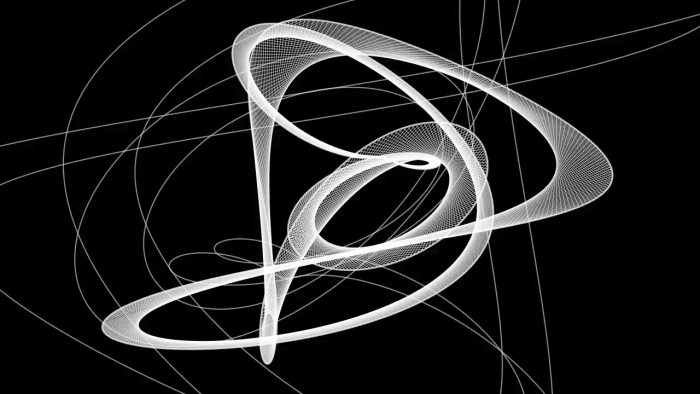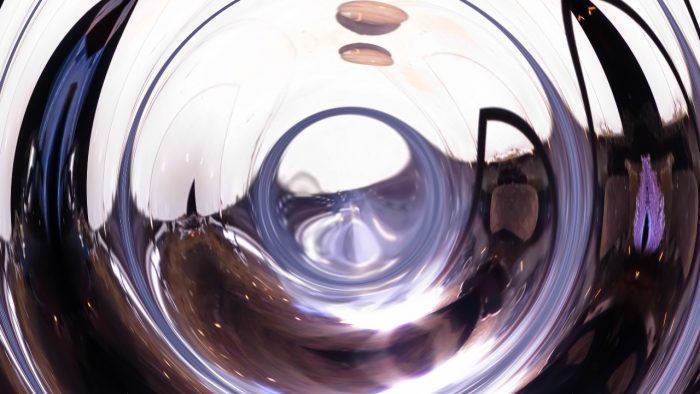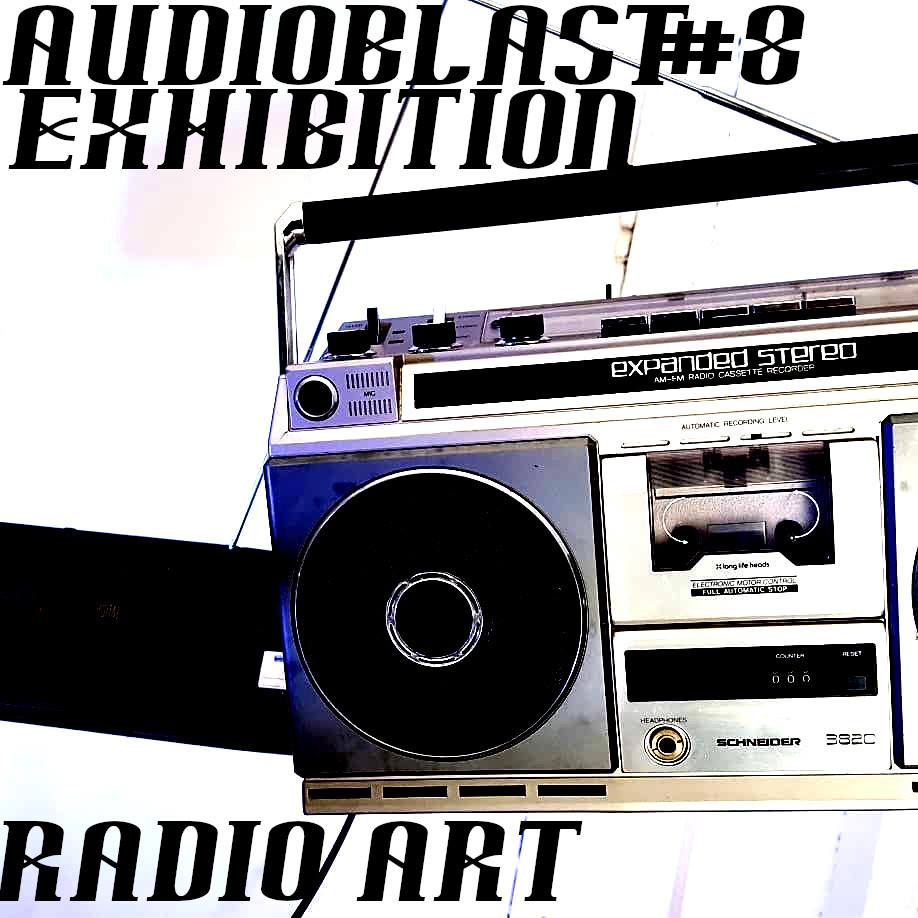Festival of sound creation using the network as a live venue, Audioblast broadcasts numerous networked audio practices including; experimental music, drone, noise, field recordings, sound poetry, electronic and comtemporary music.
The festival will be broadcast live online and through radio spatialisation system installed at the Intermedia platform on Saturday 22nd and Sunday 23 February 2020.
Global E-missions / E-missions Globales
Exhibition
Opening the 4th February 2020 at 6PM30
Exhibition opening 4th at 29th February
Opening times : from Wednesday to Saturday – 2PM30 at 6PM30
Location : La Plateforme Intermédia
4 boulevard Léon Bureau
44200 Nantes
Estuaries by Robin Plastre
Electroactoustic rooted composition constiting largely of phonographic recordings made in Nantes. The piece presents itself as a sensitive study of urban planning in the city of the Nantes and in relation to aqueous elements of urban space ; an observation of sereval choices effectued of urban planning in Nantes in relation to the cohabitation of water and the city. Estuaries : portion of the mouth of a river where the effect of the sea or the ocean intp which it flows is perceptible.
It is a transition place, junction point where one place becomes another : we will be interested here where the water and the city bring face to face or confuse… First, lead a research work that will take shape of wandering through its meanders, in search of the rupture point, the places of encounter between the city and water; then we will observe the forms which his encounters take (superposition, appearance, encircling, erosion…).
We will try to get recording sounds testimonies of these phenomena in the form “on the pattern” or the words of residents to the passages these places ; “orchestrate” ambiguities or “dissonances”, constrasting effects made possible by the sound editing and the spatialization for report the complexity of the cohabitation between urbanism and nature (and its preservation). Two places of the city will be interessed specialy : the ” water mirror” in front of the Castle of the Dukes of Brittany (where the water enters the city) and the wooden bridge on the Erdre (where the city exceeds on the water).

Robin Plastre
Protean artis who is as musch involved in sound as in image, traverse differents practices like the composition, the electroacoustic, the improvisation, the drawing, the video, the writing ; sensitive to the dance and the architecture. In the search of elsewhere (poetic nodes that encircled us and escape us), ruptures, tensions… ” He tells me that the great expanses have all been discovered, I answer him that we then have to clear the intimacy place, microcosms, spaces between spaces”
Garbage Sound by Alexander Senko and Polina Dronyaeva
The piece consists of algorithmically sequenced short sounds of garbage dumping, a field recording of a huge garbage truck and synthesized electronic sounds. Created with visual programming language Pure Data.
Quotidian sounds of flies, garbage dumping and garbage trucks trigger dual emotions of revolt and deliverance.
It is not a simple representation of the garbage dump but rather evoking of emotions connected to quotidian sounds. While we stay neutral and don’t want to attach any additional meanings, we want listeners to contemplate on what these sounds might mean to them.
For example somebody is dumping bottles in the middle of the night. God knows what a sad tramp is doing it but the resulting sound can be very cheerful. The flies may sound rhythmical and even energetic but they are always perceived as a symbol of decay.
Similarly one can be annoyed by the appearance and noises of garbage trucks, especially when they come to collect garbage in the early morning. But for someone this awful noise may be a signal that life goes on and whatever you throw away there is still someone out there who comes to tidy up after you.
The overpowering and methodical noise of the garbage truck is the most obvious expression of the city taking care of its dwellers, of each one of us, and it seems to be symbolical that this noise is heard in the hours, which are statistically considered the most dangerous for suicides. Who knows how many lives it has saved!
“Garbage Sound” soundscape stimulates people to re-evaluate meanings of everyday experiences.

Alexander Senko
Alexander Senko was born in Moscow, Russia. Graduated from Gnesins Institute as a sound engineer. Composer, sound producer, Alexander runs an artist-run laboratory “Acoustic Images” (research and production of interactive installations) and actively exhibits and performs. Alexander’s interests include visual programming language Pure Data, electronic and electroacoustic music, sound art, audio-visual interaction.
Polina Dronyaeva
Polina Dronyaeva was born in Moscow, lives between Moscow and Barcelona. Studied journalism in Moscow, Arts Management in London and Sociology in Edinburgh. Her soundscapes were exhibited at Moscow Biennials 2011 and 2015, Ars Electronica 2015, awarded at the Imagen festival 2010. Also Polina participated in conferences Amber’12, “Cultural Research in the Context of Digital Humanities” (Saint Petersburg, 2013), Pro & Contra symposium (Moscow, 2013), ISEA 2014, ICLI 2014. Since 2008 Polina and Alexander exhibit together with various soundscapes and interactive projects. Main research interests: interplay of inner and outer worlds of human beings in the interactive environments.
http://acousticimages.net/
Distortion by Johanna Nulty
The main components of my practice are sculpture, sound, video and installation. In my work I’m interested in exploring the subconcious movement of everyday materials. Amalgamating the different sounds to produce visual and audio pieces.
The process of the work is recording myself exploring with the objects and materials and creating a diverse spectrum of sounds. Thinking about texture and warmth from the sound and material. The found objects and materials don’t reveal their source and so then are not literal or illustrative of the source or action. Fragments are taken apart and rearranged are invested in the process.

Johanna Nulty
Johanna Nulty is a visual artist based between Cavan and Belfast. Nulty has a BA in Fine Art from Institute of Technology Sligo and received her MFA from Ulster University. Nulty’s work is predominantly object based, exploring sound from mass produced materials and found objects. Her practice explores the possibilities of the subconcious movement of everyday material and often results in an amalgamation of audio videos and sound pieces.
https://www.johannanulty.com/
Solar Return
Solar Return is a variable geomtry ensemble composed of the duo Jenny Pickett & Julien Ottavi. The main body of their music is based on the frequency generation and interpolation of multiple digital oscillators and analog modular synthesizers. Solar Return offers electric music
and improvised noise. Electromagnetic phenomena are the starting point of their audio creations. They produced different partitions for two audio synthesizers/oscillators/electronic DIY ect… reflecting electro reflecting electromagnetic patterns and events such as solar flares and the end of the mobile phone mast in the city as well as the unfathomable audio world of kitchen appliances. Through their performances, the duo sneaks into the world of frequency.
Burning world
As an extreme experiment, Solar return records fire sounds to create multiple solar flask crackles. Man’s burning of the world and nature is utterly abject and inconsiderate. Solar Return is sounding strongly the sound of this end of the world, these burns and the coming death toll. For this radio work, Solar Return proposes to listen to the last breaths of nature disappearing (underwater landscape, plankton, ants, words of trees) and phenomena wider and greater than humanity such as the sounds of space (selective magnetic storm) or wind in the metal cables of our structures.
Prendre le loisir de l’insurrection permanente de Gilles Le Jaune
It’s a car carcass left there, abondoned in the public space. It is immobile but acts as a radio receiver that picks up the waves of those who continues to transmit. But whose voices do we hear and what do they say us ? In France, the use of frequecies for broadcasting radio programmes is regulated by the Conseil Supérieur de l’Audiovisuel. In this way, the CSA “ensures that the programmes broadcast comply with the regulations of the protection of minors, information processing, organization of electoral campaigns, representation of society…”
A small wink to films like Christine by John Carpenter, where technology has its own will, an unhealthy will ; I wish to summon a opinion of acts against our will, against our interests, of manipulation that connects two objects that meet here : the car and the radio.
As you approach you will hear a patchwork of breaking news and alerts, sometimes false, sometimes true, to give an idea of the media treatment that accompanies the catastrophe and its resolution.
This work is for me a way of provoking a debate which I hope will be consistent with our current situation, in which I would like to bring together the mistrust that many of us have towards the media and our attachment to our independence. Personally, I only listen to the radio when I’m driving, which is rather rare in my case. But I know that many of us use our vehicles and/or listen to the radio on a daily basis. I don’t want to judge any of our habits because they are our business. I prefer to question them to hear what they claim through those who maintain them. And from there I wish you all to move the lines, to shift the demands that we impose on others, that we impose on ourselves and especially to move those imposed on us by those who have placed themselves above us. Through this work called Taking Pleasure in the Permanent Insurrection, conceived and realized on the occasion of the Audioblast Festival, First of all, I want to support those who are currently fighting and sometimes sacrificing themselves to defend their future and our future at the same time. I am thinking of the strikers, the protesters, those who wear the yellow, black, red, pink and rainbow vest as a sign of their anger and solidarity.

Gilles Le Jaune
“I am a citizen, curious and invested in finding solutions to the evils are appearing in our scoiety. I was born and I lived near Angers, with a lovely family concerned about futur. I believe in generiosity and empathy, but like round me, I have been plagued by unrest and doubts about our futur in community. That is why I am sensitive to ecological and social issues, but also to issues of power and tdemocraty. I studied energy and thermal enerdy with the wish to participate at my level in the technical avances that- I hope naively at this time, would allow us to reduce our impact on the environment. I’m sorry to say that I didn’t find any miracles. But I’m hapy to tell you that we already have the solutions that we seem to lack. Just implement them. It is enough to listen to those who already try, those who tinker, get used to themselves, in group or in family.

